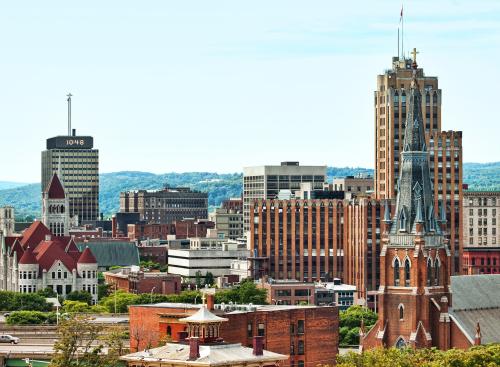It is hard to find good news these days, especially coming from Sacramento, the capital of one of the most hard-pressed states in the country. Yet an evolving model of development is emanating from the metropolitan area that is being watched carefully around the country.
This model could inspire sweeping national transportation, energy and climate change legislation and future infrastructure investment and real estate development.
The model started with the much-admired Blueprint Project, led by the Sacramento Area Council of Governments. Next came Senate Bill 375, calling for regional transportation and development plans that minimize auto dependency, reduce climate change gas emissions and encourage walkable urban development. The next steps are the Sacramento Regional Transit Master Plan and Transit-Oriented Guidelines, to be released in May. Taken together, they offer a bold effort to give the market what it wants: the choice of the well-known drivable suburban or walkable urban development, the basis of the next American Dream.
For the past half-century, American households demanded and got only one way of living and working, the suburban way that meant driving. Basically, California invented this way of life and exported it across the country and around the world. We all reveled in it. The songs of the Beach Boys and Jan and Dean still echo through my mind, reminding me of a way of life and a way of developing our communities that was seductive at the time.
Little did we know of the unintended consequences of drivable suburban development pattern, including:
- Land consumption eight to 12 times that of population growth.
- Significant increase in car-miles driven and foreign oil consumed, mostly from hostile countries.
- The onset of the obesity, diabetes and asthma epidemics related to a car-dependent lifestyle, especially among our children who cannot even walk to school anymore.
- Household income diverted from wealth building to paying for a fleet of depreciating cars, taking at least 25 percent of income vs. less than 5 percent a century ago.
- The quality of life for the community goes down when more drivable suburban development occurs, such as the next strip mall. This leads to not-in-my-backyard opposition. According to a soon-to-be-released Brookings Institution study, car-dependent households emit three times the climate change gases, such as carbon dioxide, as a walkable urban household.
Yet these consequences, which evoke much hand-wringing, do not tend to motivate behavioral change. That change comes when consumers vote with their pocketbooks; this they have done. There is pent-up demand for walkable urban development, with evidence everywhere you look. This includes research of consumer preferences and market research showing that walkable urban housing has held its value during this recession while the bulk of price declines occurred in fringe suburban housing.
Unfortunately, many metropolitan areas enforce zoning laws that prohibit building higher-density, walkable urban development. There is great NIMBY opposition to it. And the necessary infrastructure for a choice of transportation options from walking and biking to riding transit, along with cars, is generally not available.
Yet Sacramento is showing the rest of the state and nation how to do it. The Blueprint is widely regarded as a state and national model of regional development planning. The proposed Regional Transit Master Plan, along with the Transit-Oriented Development Guidelines, will provide the extension of the transit system while helping to make walkable urban development acceptable around the stations.
Another step is to provide management to each of these walkable urban, Transit-Oriented Development places, such as Station 65, a proposed 500,000-square-foot mixed-used project to include residential units, office and retail space, and a hotel and restaurants. These management organizations would be modeled on the Downtown Sacramento Partnership. In fact, many of these Transit-Oriented Development places can subcontract with the partnership to provide services in the early years.
Finally, these walkable urban, transit-oriented places need to develop a conscious affordable housing strategy. The current affordable housing strategy in Sacramento is “drive until you qualify” – which is obviously bankrupt. It is crucial to have a conscious strategy since it is going to take a generation to catch up with the pent-up demand for walkable urban housing and commercial development.
According to Brookings Institution research, there should be eight to 12 regionally significant, walkable urban, transit-oriented places in the region. Today there are only three: downtown, midtown and Old Sacramento. The opportunity for locating and building five to nine additional walkable urban, transit-oriented places and building far more development in the existing three would be worth billions of dollars and would represent a more sustainable way of living.
Sacramento can provide a model for the country, one that we certainly need.
The Brookings Institution is committed to quality, independence, and impact.
We are supported by a diverse array of funders. In line with our values and policies, each Brookings publication represents the sole views of its author(s).



Commentary
Op-edSacramento’s Transit-Oriented Development Plan a Model for the Nation
March 18, 2009